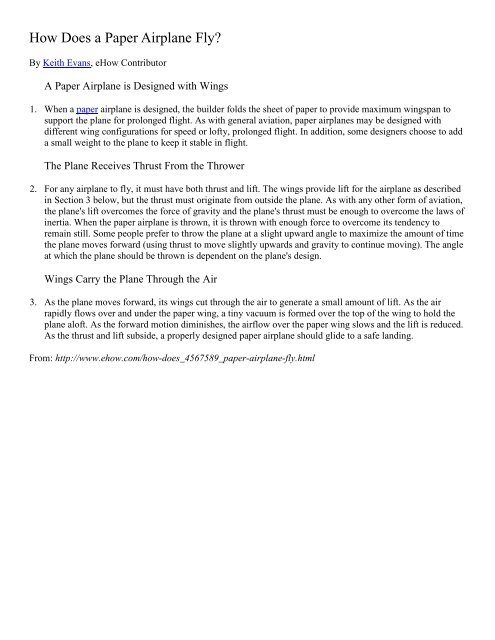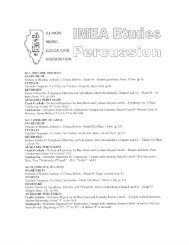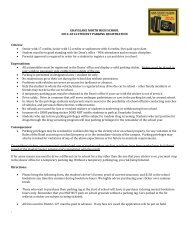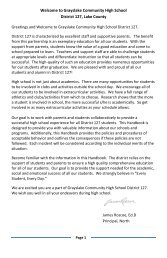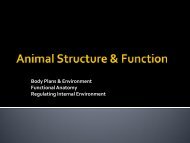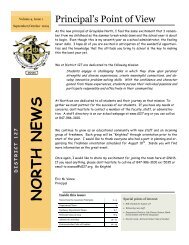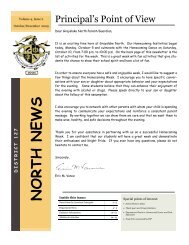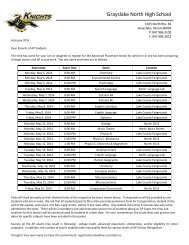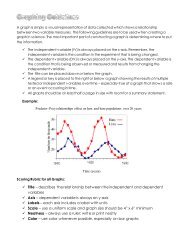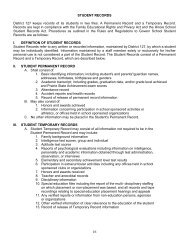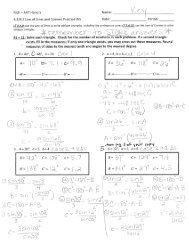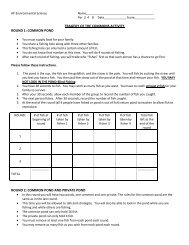Aerodynamics What makes a paper airplane fly? Air — the stuff ...
Aerodynamics What makes a paper airplane fly? Air — the stuff ...
Aerodynamics What makes a paper airplane fly? Air — the stuff ...
You also want an ePaper? Increase the reach of your titles
YUMPU automatically turns print PDFs into web optimized ePapers that Google loves.
How Does a Paper <strong>Air</strong>plane Fly?<br />
By Keith Evans,<br />
eHow Contributor<br />
A Paper <strong>Air</strong>plane is Designed with Wings<br />
1. When a <strong>paper</strong> <strong>airplane</strong> is designed, <strong>the</strong> builder folds <strong>the</strong> sheet of <strong>paper</strong> to provide maximum wingspan to<br />
support <strong>the</strong> plane for prolonged flight. As with general aviation, <strong>paper</strong> <strong>airplane</strong>s may be designed with<br />
different wing configurations for speed or lofty, prolonged flight. In addition, some designers choose to add<br />
a small weight to <strong>the</strong> plane to keep it stable in flight.<br />
The Plane Receives Thrust From <strong>the</strong> Thrower<br />
2. For any <strong>airplane</strong> to <strong>fly</strong>, it must have both thrust and lift. The wings provide lift for <strong>the</strong> <strong>airplane</strong> as described<br />
in Section 3 below, but <strong>the</strong> thrust must originate from outside <strong>the</strong> plane. As with any o<strong>the</strong>r form of aviation,<br />
<strong>the</strong> plane's lift overcomes <strong>the</strong> force of gravity and <strong>the</strong> plane's thrust must be enough to overcome <strong>the</strong> laws of<br />
inertia. When <strong>the</strong> <strong>paper</strong> <strong>airplane</strong> is thrown, it is thrown with enough force to overcome its tendency to<br />
remain still. Some people prefer to throw <strong>the</strong> plane at a slight upward angle to maximize <strong>the</strong> amount of time<br />
<strong>the</strong> plane moves forward (using thrust to move slightly upwards and gravity to continue moving). The angle<br />
at which <strong>the</strong> plane should be thrown is dependent on <strong>the</strong> plane's design.<br />
Wings Carry <strong>the</strong> Plane Through <strong>the</strong> <strong>Air</strong><br />
3. As <strong>the</strong> plane moves forward, its wings cut through <strong>the</strong> air to generate a small amount of lift. As <strong>the</strong> air<br />
rapidly flows over and under <strong>the</strong> <strong>paper</strong> wing, a tiny vacuum is formed over <strong>the</strong> top of <strong>the</strong> wing to hold <strong>the</strong><br />
plane aloft. As <strong>the</strong> forward motion diminishes, <strong>the</strong> airflow over <strong>the</strong> <strong>paper</strong> wing slows and <strong>the</strong> lift is reduced.<br />
As <strong>the</strong> thrust and lift subside, a properly designed <strong>paper</strong> <strong>airplane</strong> should glide to a safe landing.<br />
From: http://www.ehow.com/how-does_4567589_<strong>paper</strong>-<strong>airplane</strong>-<strong>fly</strong>.html


